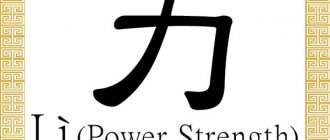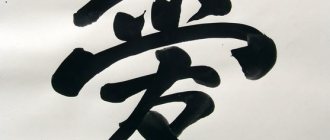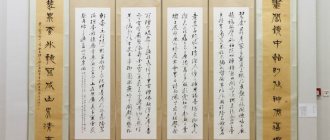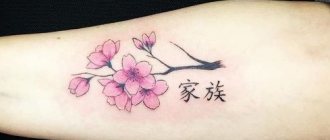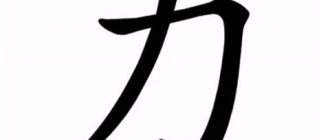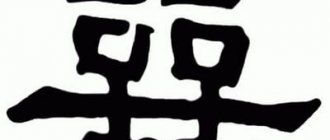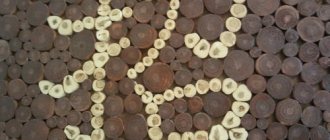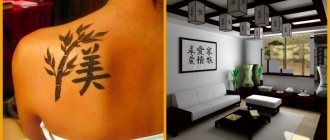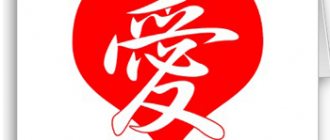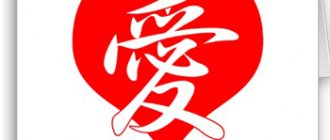The Chinese language consists entirely of hieroglyphs. The way sounds and individual words are composed is radically different from the alphabetic one used in most developed countries.
More and more people are starting to learn basic Chinese characters. This is due to the fact that China is becoming an increasingly influential country on the economic map, and many companies want to have an employee with such a complex skill on staff.
Not a single person knows the complete collection of all possible hieroglyphs. There are almost one hundred thousand of them. But for comfortable communication or reading newspapers, you need to remember only the basic ones.
Is it possible to quickly memorize Chinese characters?
Learning and memorizing a large number of Chinese characters is not easy for beginners. The main difficulty is the excellent language system. If you do not grow up in an environment where this method of constructing words and sentences is used, it will not be easy to get used to it.
But we must take into account the fact that more than a billion people were able to master it. The main thing is to believe in yourself.
Things to remember when memorizing:
- Understanding the language system, its foundations, and origins will make the task easier.
- After memorizing a certain amount, the following characters will be easier to learn.
When learning this language, you need to remember that only regular and long-term studies will bring significant results.
List of the easiest
Each character in Chinese writing has its own meaning. It happens that a hieroglyph reflects the meaning it resembles. Some signs express their entire meaning with the help of a simple illustration.
But these are the simplest symbols, and their minimum number. There is no need to think that such signs need to be given less time when studying. After all, what required minimal effort may not work at some point. Next, we will look at the ten main characters of Chinese writing.
Yī
This symbol is depicted as a horizontal stick, which is the length of one letter. Such a simple symbol should mean something simple. That’s right, standing apart from the others, it means the number one. It is easy to remember by understanding the Chinese counting method - one stick means one, two sticks means two, and so on.
Knowing the meaning of symbols without understanding how they work in a sentence will not be enough. To explain in a simple way the method of constructing words, we can give an example: if after the sign “ten” you write “one” next to it, you get eleven. “Thirteen” is made in the same way.
Ren
A very common symbol. It resembles a child’s drawing of a hut, but in reality it means “Man”. To make it easier to remember, you can imagine that there is a head at the top, and the falling side lines are equipped with shoes.
It is written simply. First, one arc goes from above to the left, then from above it goes to the right.
If you use "one", "pointer" and "person" in sequence, you get the meaning "one person".
Rù
Very similar to the previous one in appearance, but very different in meaning. If you add a small line from the top to the left to the sign for “man,” the meaning changes to “enter.”
It is easier to remember by visualization. It looks like something sharp that penetrates the wood. It is written in exactly the same way as “man”, only the dash is indicated first, and then the side arcs.
Rì
It’s already harder to visualize, because before this hieroglyph was written differently. Once upon a time it was a circle with a dot in the middle. The meaning was easy to remember and obvious. The most important circle in a person’s life, what is it? That's right, solar, so the meaning of this symbol was “sun”, or the time of day when it was visible “day”. The modern look has been changed to a square with a small line. It is written simply:
- The first vertical line is on the left.
- The second horizontal top.
- Then vertical right.
- At the end, the middle and lower horizontal line is drawn.
Shan
Already a simpler symbol that looks like a trident. It also looks like three mountain peaks. Therefore its meaning is "mountain". Very easy to write and remember, it is written as follows:
- The vertical left and horizontal bottom lines form a shelf.
- The largest and the same as the first line are placed on it alternately.
Kǒu
Hieroglyph in the form of an empty square. When many people see it, they think that the computer’s drivers simply cannot show this sign. On the monitor it looks like a bug in the program code, but its creators never thought that such a problem would arise. It means “entrance”, “whale”, “list” or “mouth”. It is written on paper in the same way as the sun, only without a center line. The combination of "person" and "list" forms "population". The logic is difficult to understand, especially if you don’t know the background.
Zhōng
Creators are increasingly moving away from the idea of simplicity and intelligibility. Depending on the context, this symbol can have the meaning “and “middle”. In fact, if you imagine a three-dimensional model of this symbol, you can see a plane that is pierced by a vertical line in the middle. It looks like a horizontal rectangle, the center of which is crossed by a straight line.
Hǔo
Well, here you don’t have to use much imagination to see “fire” in this Chinese character. At first it may seem that this is a “person” waving the arms that appear, but no. It is written on paper in the same way as “man”, but first you need to designate the flames that envelop it from all sides. If you write “fire” and “mountain” in sequence, you get “volcano”.
Nǚ
A difficult Chinese character to write. It means "woman". But to imagine it you need to strain. He wondered how the lady bowed her head slightly. First you need to write the top line and the left leg, then the right leg crossing it. To indicate that we are talking about a human woman, you need to add the symbol “human”.
Men
The symbol looks like a door in an old cowboy saloon. The Chinese also thought so and decided to mark the door for them. It is written as follows:
- Long vertical lines first.
- Then 6 short horizontal ones.
- And then two vertical ones.
Learn the following Chinese words
From the first poster:
| 公共建筑 | gōnggòngjiànzhù | Public buildings |
| 站 | zhan | station, railway station |
| 机场 | jīchăng | airport |
| 大使馆 | dashǐguǎn | embassy |
| 领事馆 | lǐngshìguǎn | consulate |
| 银行 | yinhang | bank |
| 邮局 | yóujú | |
| 存放行李处 | cúnfàngxínglichù | luggage storage |
| 药房 | yàofáng | pharmacy |
| 售票处 | shòupiaochù | ticket office |
| 医院 | yīyuàn | hospital |
From the second poster:
| 旅馆 | lǚguăn | hotel |
| 饭店 | fandiàn | hotel, restaurant |
| 餐馆 | cānguǎn | restaurant |
| 饭馆 | fànguăn | restaurant |
| 咖啡馆 | kāfēiguǎn | cafe |
| 茶馆 | cháguǎn | tea room |
| 超市 | chāoshì | supermarket |
| 超级商场 | chāojí shāngchăng | supermarket |
| 超级市场 | chāojí shìchăng | supermarket |
| 商店 | shāngdiàn | shop |
| 市场 | shìchăng | market |
| 体育场 | tǐyùchǎng | stadium |
| 公共汽车站 | gōnggòngqìchēzhàn | bus stop |
| 厕所 | cesuŏ | toilet |
And as always, to remember, you need to understand. Let's look at what these words consist of.
You've probably noticed that many words have the same hieroglyphs. Let's look at what they mean.
Table of Chinese radicals
Chinese hieroglyphic writing has several differences from the standard way of composing words that need to be memorized. Radicals, just like letters, can be part of one word. These are simple lines that carry a certain meaning on their own, but combining them or adding them to other symbols allows you to create new words. If you use radicals correctly, they are also sometimes called keys, you can easily memorize hieroglyphs, navigate in Chinese dictionaries and tables, and when searching for a word.
How many keys are there in Chinese?
The Chinese language, like any other “living” language, is not something frozen. It is changing—old concepts and hieroglyphs are falling out of use, and new ones are appearing. And along with this, the keys of the Chinese language are changing, both in quantity and in composition. For example, the ancient dictionary “Shuo Wen Jie Tzu”, dating back to 121 BC, contained 540 keys , and in the “Summary Table of Keys of Chinese Characters” adopted in the PRC in 1983, there are already only 201 . But the most widely used system was based on the Kangxi dictionary , which was the standard in the 18th - 19th centuries. This system consists of 214 Chinese language keys.
How many hieroglyphs are there?
If we take into account outdated ones, which are used for reading ancient books, special and new ones, there are more than 100,000 of them. Learning all the Chinese characters that there are is truly the greatest feat. It's good that you don't need to do this.
To talk with the Chinese and understand the essence of their television and radio programs, 500 pieces are enough. If you learn one thousand, then 90% of all newspapers will be understandable. Knowing 2500 will allow you to read 99% of fiction. To pass the language proficiency exam, you will have to learn 3,000 characters.
"Victory"
The character 勝 can be divided into three elements : on the left is “meat” 月, on the right is 龹 at the top and “strength” 力 at the bottom. The component “strength” is the key of hieroglyph No. 19.
Him:ショウ
Kuns:か(つ) – to win, win, gain the upper hand まさ(る) – to surpass
This “kanji” is one of the so-called会意 “kayi” - hieroglyphs that are made up of several others. In this case, the sign 朕, which here means “to raise,” and the sign 力, “strength,” were used. It turns out that “victory” 勝 is “strength” 力 something “to keep at the top” 朕. Simply put, to win, you need to have good abilities that allow you to be above everyone else. This turns out to be a kind of mnemonic rule .
| Word | Reading | Translation |
| 勝敗 | しょうはい | victory or defeat; outcome (of battle, duel) |
| 優勝 | ゆうしょう | sport. victory |
| 名勝 | めいしょう | beautiful place |
| 勝手 | かって | kitchen; orders; status; own convenience; own pleasure; own discretion; self-will; arbitrariness |
Our hieroglyphic article has come to an end. We hope you found it useful. Do not forget to write down hieroglyphs when studying them, and also repeat them from time to time. Reading will help you memorize “kanji” by heart - the more often you encounter a hieroglyph, the “closer” it will become to you. So don't skip your reading sessions ! Good luck in learning Japanese!
Japanese characters: “life”, “death”, “freedom”, “victory” - we learn reading, writing and meanings together. Learning Japanese Kanji is easy!
Character structure
Everything has a basis, and once you understand it, you can easily navigate unfamiliar material. Chinese characters have peculiar features by which they can be divided into groups. When you first meet it, it’s just a set of randomly placed sticks and dashes, but in reality, this is not so.
Traits
The features that make up a hieroglyph are types of sticks and dashes; they do not have independent meaning. It is a way to categorize existing words based on their appearance and spelling style. You need to know that any number of hieroglyphs can consist of only four types of features, such as:
- Simple. Lines, dots.
- Curves. Traits containing hooks.
- Complex. Broken or twisted lines with a complex configuration.
- Difficult with a hook.
Graphemes and clues
Graphemes have the same meaning as radicals. These are the simplest printed signs that have only one fundamental meaning. They are used to compose lexically complex words. These are the simplest words; they denote objects of nature or basic concepts. They can contain a different number of features.
Complex signs
To compose complex Chinese characters, a combination of several graphemes is used. There are two ways to compose such words, the first is ideographic, and the second is phonideographic. To understand the difference, you need to take a closer look at them.
Ideographic method
Words composed in this way contain several printed graphemes, the combination of meanings of which forms a new concept. It is worth noting that the combination of graphemes and radicals does not affect the pronunciation of the word. In the modern Chinese dictionary, approximately a tenth of independent words are ideographemes.
Phonideographic method
This type of hieroglyph contains two types of keys. The first indicates the semantics of the word and specifies the concept of the subject. The second indicates the pronunciation of the word. There are more than 80% of such signs in the Chinese language.
Easy ways to remember writing hieroglyphs
I think you are convinced that the hieroglyph has a clear structure and cannot contain random elements. This makes it quite easy to remember the spelling and meaning of hieroglyphs.
Graphemes go back to pictograms, representing modified, extremely simplified and abstract drawings. On the Internet you can find many pictures showing how the image gradually became more abstract and abstract. This helps with quick memorization.
The most ancient hieroglyphs, from which modern ones are derived, date back to the middle of the 2nd millennium BC. These are Yin fortune-telling inscriptions on animal bones and turtle shells. Gradually, the images became more and more abstract until they acquired the modern spelling
- 人 rén person: two legs and a body
- 大 dà big: a man has his arms outstretched
- 天 tiān sky: something big over a big man (option: One over a big man)
- 山 shān mountain: three peaks
- 口 kǒu mouth: keep your mouth wider
- 曰 yuē say: tongue in mouth
- 竹 zhú bamboo: resembles two bamboos
When I first started studying Chinese at university, we first studied a list of 214 keys. I wrote them down many times, trying to write beautifully and remember the correct order of features, which is strictly fixed. This is not worth wasting your time on.
Having studied the keys, it is not difficult to remember complex signs - ideograms and phonideograms. You can come up with a story that will allow you to forever remember complete hieroglyphs with a large number of features.
Memorization examples:
- 妈 mā mother - a woman 女 nǚ who works like a horse 马 mǎ
- 好 hǎo good - when a woman 女 nǚ gives birth to a child 子 zǐ
- 江 jiāng river - water 水 shuǐ that does the work 工 gōng (the character for "river" is an example of a phonoid ideogram where the phonetic reading of "work" has changed over time)
- 仙 xiān saint, immortal - a person 人 rén who lives in the mountains 山 shān
- 怕 pà to be afraid - the heart 心 xīn turned white 白 bái from fear
- 休 xiū rest - a man 人 rén lay down to rest under a tree 木 mù
- 难 nán difficult – difficult with the right hand (again) 又 yòu to catch a short-tailed bird 隹 zhuī
- 国 guó state - ruler with a spear 玉 yù (jade, symbol of imperial power) behind the fence 囗 (without reading).
The main thing is to give free rein to your imagination. Over time, this will become a habit and to memorize a hieroglyph it will be enough to simply remember the names of the graphemes that make up its composition.
And here is an example of memorizing the full spelling of the character “love” 愛 ài. If you break it down into its component elements, add a little humor, you get the following phrase: “the claws sank into the heart, the legs gave way, and then the lid came.”
Or here's how you can remember the hieroglyph 腻 nì. Its dictionary meanings are “grease, dirt, shiny, glossy, smooth.” It consists of the graphemes “moon” (very similar to it is “meat”), “shell”, “archery” and “two”. You can come up with a story: a man shot game with a bow (glossy meat, fatty, shiny, with a lot of fat), and sold it for two shells (in ancient times - money) to the Japanese. Just in Japanese, “two” is read no matter what.
The funnier and more absurd the story, the easier you will remember the hieroglyphs.
In addition, very often such an analysis of hieroglyphs helps to further clarify the meaning of the most complex and polysemantic categories of Chinese philosophy and culture. In my lectures on Chinese philosophy, I often resort to this method of explanation.
Take, for example, the category “dao” 道 dào . Tao is one of the key categories of Chinese philosophy and culture, very multi-valued and complex. I will list its main dictionary meanings:
- way, road, tract; track, road; on the way, on the way
- path, route; tract; astr. path of a celestial body, orbit; anat., med. tract
- paths, direction of activity; way, way, method; an approach; means; rule, custom
- technology, art; trick, cunning; trick
- idea, thought; teaching; doctrine; dogma
- reason, basis; rightness; truth, truth
- Philosopher Tao, true path, highest principle, perfection
- Taoism, the teachings of Taoists; Taoist monk, Taoist
- Buddhist teaching.
And these are not all the meanings! However, if you break the hieroglyph into its constituent graphemes, then all the meanings will become intuitively clear. The first grapheme is 首 shǒu, “head, crown, beginning, main, main, essence.” The second is “move forward.” That is, Tao is something basic that moves forward, is in motion.
Or, another example, the most important Confucian category仁 rén is philanthropy, humanity . The hieroglyph consists of two graphemes: man 人 rén and two 二 èr. And it is read the same way as “man”. That is, philanthropy is relationships between people that are built on the basis of justice. As Confucius said, “Only those who love humanity can love people and hate people” (“Lun Yu”, IV, 3).
♦ On the subject: How to learn hieroglyphs and replenish your hieroglyphic stock?
One of the favorite pastimes of the Chinese is to write characters with a brush dipped in water. Moreover, here the hieroglyphs are also written in a mirror image!
How to read
The peculiarity of Chinese characters is that writing is not tied to pronunciation and reading. Even knowing the phonetic key, you may not always pronounce certain words correctly. The existence of homophones also causes complexity. These are words that the Chinese write differently, they have different meanings, but they sound the same. Because of their existence, some difficulties arise in the correct translation of oral speech.
How to remember reading hieroglyphs
Although in the Chinese language most of the characters fall into the category of phonoid ideograms, however, the character does not contain a direct indication of reading, like phonetic languages. Another difficulty of the Chinese language is the widespread phenomenon of homophony: due to the limited number of syllables (just over 400), different characters can be read the same, which creates certain difficulties in understanding spoken language. However, it is very convenient to memorize a whole series of hieroglyphs that have the same reading.
♦ Read more: Homophones in Chinese and some traditions associated with them
In the early days of my study of the Chinese language, I usually remembered the tone by some line: a horizontal line at the top of the character meant the first tone, a slanted line to the left meant the second tone, a horizontal line at the bottom meant the third tone, and a slanted or tilted line to the right meant the fourth tone. Although there were hieroglyphs where the required line was not found.
A completely different situation arises in the Japanese language, where there are two types of reading hieroglyphs: onnoe, which came from the Chinese language, and kunnoe, traditional Japanese. Thus, one hieroglyph can have up to 5 or more different readings! In different phrases, hieroglyphs can be read differently.
For example, in Japanese the words “yesterday” 昨日 and “tomorrow” 明日, which contain the same sign 日 (day, sun), are read completely differently: kino: and ashita, respectively. In the phrase “every day”, “daily” 毎日 will be read mainichi, “third number”, “three days” 三日- mikka. Although, in theory, all four words should end the same.
That is why the only effective way to remember reading hieroglyphs in both Chinese and Japanese is by cramming : repeating them repeatedly to yourself and out loud, trying to remember the melody. In the Chinese language, in my opinion, this is easier to do due to the presence of phonideograms and the general repetition of syllables; in Japanese it is a little more difficult.
Is it easy to learn Japanese characters after Chinese?
The Japanese language takes its origins from Chinese. These are slightly modified signs that also contain graphemes and features. A distinctive feature of the Japanese language is the presence of the alphabet, katakana, and hirogana. If you wish, you can write all words and sentences in full using them, or you can use Kangji hieroglyphs for this. If a person has studied a large number of Chinese characters, it will be easier for him than for someone who first encountered this style of writing. But the catch is that the hieroglyphs themselves may be written the same, but their meaning is different.
TOP 12 most popular hieroglyphs for tattoos
Love
Chinese character Love
Japanese character Love
Happiness
Chinese character Happiness
Japanese character Happiness
Wealth
Hieroglyph Wealth
Hieroglyph Wealth
Health
Chinese and Japanese characters Health
Force
Hieroglyph Strength
Luck
Hieroglyph Luck
Joy
Hieroglyph Joy
World
Hieroglyphs World
beauty
Hieroglyph Beauty
Independence
Hieroglyph Independence
Brave
Hieroglyph Brave, Brave
Dream
Hieroglyph Dream
